While I apologize for the sewing/crafty focus of this blog, the fact that it’s fall means new clothes for school! Indeed, I know that many of you have already begun months of work in draping labs.
While shelving in the Main Stacks area, I’ve noticed is that we have a lot of books that tell a person how to construct a garment. Well, hundreds of garments. And, we’ve found more than a few magazines and blogs that do the same.
Hello from Denise Ingram and me, Beth McMahon. We’re going to review a bunch of the how-to books that show folks how to use a sewing machine and how to improve their garment construction techniques. Denise has completed the Millinery and Draping Certificates here, and I graduated from the Fashion Design program and used to make couture wedding gowns. Between us, we have stitched a lot of stitches. Hopefully this will be the first issue in a series, since the Gladys Marcus Library has so many books on these subjects.
I’m really excited that the current trend in DIY has encouraged so many to pick up this craft/art which I enjoy so much. But here’s my question: Which books do you find you’ve learned the most from? Older ones, with mostly line drawings? New ones, with their multi-media approach, including DVDs and photos? Ones written by bloggers you’ve come to like? How-tos by trusted experts? I’m curious here. I thought this space would be a great place for Denise and I to talk about some of the new books we’ve purchased and some of the old friends who still haunt our shelves.
Vogue Sewing
The most recent edition of this classic text is kept at the 5th Floor Main Stacks TT515 .V63 2000.
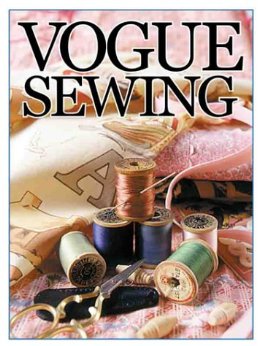 However, several earlier editions are filed on the 5th floor, in the Main Stacks: The Vogue/Butterick step-by-step guide to sewing techniques, published in 1998 is shelved at TT705 .V64 1998.
However, several earlier editions are filed on the 5th floor, in the Main Stacks: The Vogue/Butterick step-by-step guide to sewing techniques, published in 1998 is shelved at TT705 .V64 1998.
This is the book that some friends had as their basic sewing text. It’s a good basic book. The glossaries address how-to for seam finishes, hand stitching, and fabric types. It includes some basic color theory, and has excellent illustrations of fabric layout. One good feature is an appendix of seam finishes, but Denise and I agreed that the diagrams weren’t the clearest, and the information seemed very text-heavy, instead of being presented in simpler step-by-step instructions.
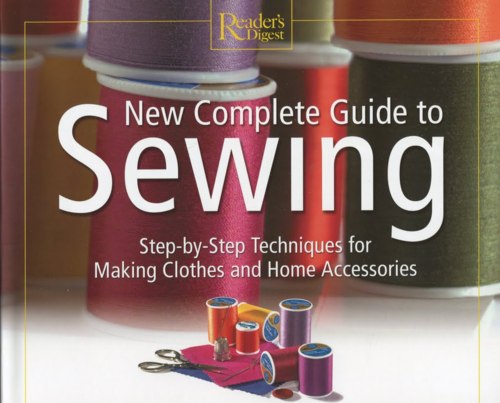 5th floor Main Stacks TT705 .N48 2002b
5th floor Main Stacks TT705 .N48 2002b
Ok, so I’m biased. I admit it. This is the book that I used for my first tailoring class about 30 years ago, and I still think it’s the best comprehensive how-to for any kind of sewing project. I still consult it any time I put a zipper in. It has an excellent glossary of fabric types that gives short references to the fiber content and end uses. Denise comments that this is really a great book for anyone who wants to sew, from the newest beginner to the most experience connoisseur. Fitting, tools, and machines are explained. Each technique is described and illustrated very simply step-by-step. The range of construction details presented is impressive. I still have the copy I bought 28 years ago, but the current edition (2010) is so good that Denise just bought herself a copy. And the new one doesn’t have the ’70s-era design projects in the back.
Couture Sewing Techniques by Claire Schaeffer
5th Floor Main Stacks TT515 .S483
As the title states, this book is focused on couture: the development, romance, and construction techniques that comprise the made-to-measure industry. The 1994 edition (see the cover on the left) of this book lacks visuals. It was revised in 2001 and again in 2011 (the cover below on the right), and each version gets more comprehensive and more visually engaging. It’s got a lot of good information, including a good introduction to what “couture” is and how it evolved, as well as a lot of analysis of influential couture pieces, including images of their under-structure and details about how to reproduce them.
Unfortunately, the visuals aren’t as clear as some of the other books we discuss, and there is an awful lot of wordy explanation. Despite the great information in the text, even someone as bookish as I am is unlikely to read long paragraphs in a how-to book. This book is intended for an advanced stitcher, and one with an interest in fashion history. Some of the other titles we’re discussing are easier for a beginner or intermediate-level stitcher to follow.
Gertie’s new book for better sewing : a modern guide to couture-style sewing using basic vintage techniques by Gretchen Hirsch
5th Floor, Main Stacks TT515 .H57 2012
This book offers a specific point of view: the central goal is to teach beginners to sew by recreating the vintage-y look of the author, Gertie. Gertie has a blog which you can find here:
http://www.blogforbettersewing.com/p/projects.html
Her sewing book contains a short glossary of some more commonly used fabrics, patterns for some vintage-styled garments, and clear directions in order to make them. What Denise and I like about this book is that it contains a lot of good problem solving how-to information, along with a solid range of simple patternmaking and basic sewing techniques. In addition, she provides clear instructions for finishing and tailoring techniques used frequently in mid-twentieth century ready-to-wear. Gertie also describes the logic behind commercial patterns, like the fact they have an antiquated fitting rubric that still includes a lot more ease than is useful. In answer to these fit issues, she sized her patterns using herself as the standard 8, which is probably more friendly for the larger spread of the current American woman. The illustrations aren’t as clear as the more technically-styled Reader’s Digest ones, but this book may challenge the imagination of the inexperienced stitcher who wants to develop her own style. Plus, she offers insights into the great details that make clothes of the 40s and 50s so funky and distinctive.
The Zapp Method of Couture Sewing by Anna Zapp
5th Floor Main Stacks, TT515 .Z22 2004
This book offers good solutions to fit problems, and good real-life images to demonstrate. An odd feature Denise and I noticed is that the examples are all constructed in dark fabrics, which makes it more difficult to see the contrast in the construction layering. The book is very focused on suiting and “professional” clothes, and rather limited in techniques shown, but those it demonstrates are clearly done and have many helpful hints. The book only covers the basics involved in a fusible-interfaced pantsuit, but it is clearly done, including great tips for fitting and adjusting a commercial patterns, and the steps for working the jacket details are also well explained. While it doesn’t offer the most elegant tailoring techniques, it will help the reader construct a suit. This is a good intermediate-level reference for someone wanting to produce a well-fitting garment quickly.
I Love to Sew by Barbara Corrigan
http://books.google.com/books/about/I_love_to_sew.html?id=SFkkAQAAMAAJ
5th Floor Main Stack TT 712 .C65
This is a very simple book with a workbook of basic handstitches. It includes a description of most basic sewing tools such as pins, needles and chalk, but pressing tools are excluded. Denise liked the discussion of how to thread a needle and keep sewing machine oiled. After that, however, the book takes an odd turn into crafting applications like fringing fabric, embroidery stitches, and making accessories, like small bags or pillows. Published in 1974, it reads like a hippie accessories manual for the non-sewing beginner. We have a lot of much better books!
Basic Knowledge of Sewing by the Juki Corporation
5th Floor Main Stack TT713 .J85 1991
This unusual book is more of a maintenance manual than a sewing guide, including technical adjustments to improve needle placement in order to troubleshoot machine stitching. It includes detailed descriptions of how the different parts of the machine, feed dogs, needles, bobbin, and timing feeds all move in concert to create a row of machine stitching. While it describes a particular series of Juki industrial machines (like many found in the C building), it gives a good overview of how lockstitch machines work in general. If you’re curious about how the machine works, we recommend you take a look. But for construction instruction, we have much better resources.
Sewing 101 by Creative Publishing International, Inc. 2011
5th Floor Main Stacks, TT705 .S465 2011
This book comes with a detailed, step-by-step DVD where an unnamed author takes the viewer through the details of making a garment and reading a pattern. The video takes time to show the viewer each step of some really basic sewing projects.
The book includes clear photographs of the sewing machine mechanisms, including how a stitch (standard lockstitch machine) comes together, how to thread different kinds of bobbins, how to troubleshoot messy seams, how to finish seam allowances for different kinds of fabrics, plus a rundown of handstitches. Detailed photographs about tools and products are included, with descriptions. I like the fact that it shows types of tools that are readily available in WalMart or Michaels, but still includes some more esoteric tools like the ones we learn to use here at FIT. Denise loved the detailed breakdown of how to cut out a variety of fabrics, including working with knits and matching patterns, each with careful pics. I liked the format, too. It’s spiral bound, so it will stay flat easily on the worktable while one refers to it. We both found the photographs of taking personal measurements to be especially clear and understandable, and also appreciated the instructions on how to use a commercial pattern. Finally, the book walks the reader through some simple items that everyone woman wears, like pull-on skirts, pants, and T-shirts. There’s nothing advanced in here and the clothes are pretty dowdy, but the instructions are clear and solid. Denise immediately bought herself a copy of this one. This book is a comprehensive alternative to the Reader’s Digest Guide mentioned above, especially if one learns better from photographs and film clips than from diagrams.
Other titles in the series are described here:
http://www.creativepub.com/categories/232/Sewing.html
Apparel: Design, Textiles and Construction by Louise A. Liddell and Carolee S. Samuels
5th Floor Main Stacks TT 518 .L48 2012
This is a textbook, aimed at students taking fashion design and merchandising courses. It defines such commonly used terms as “fad”, “classic”, “retro” and “style” vs. “fashion”. It goes on to define basic garment details and silhouettes, and offer a brief history of (western) clothing and the evolution of fashion. The next chapter covers the many parts of the apparel industry. It talks about consumer choices and laws affecting the industry, and the range of fibers used to make textiles. While I can understand the need to clarify apparel sales venues, such as specialty, online, discount, the sections on the use of credit and the one titled “Getting your money’s worth” seem aimed at students who will primarily be consumers, not producers.
Further chapters discuss in-depth clothing care, the dry cleaning industry, and alternative clothing markets, such as medical and differently-abled. Then it proceeds through a breezy overview of fiber properties and, finally, moves on to an overview of machine stitching techniques. While there’s a lot of good information in here (detailed sewing machine and serger diagrams, order of construction tables, types of pockets), it’s packed in with so many other things that it would be difficult to find it.
Denise and I found the title of this book misleading. This is really an introduction into the industries that produce, sell, and regulate clothing. The sewing how-to seemed to be applied as an afterthought to this general course and not explored in much detail. In fact, many of these topics seemed to belong in different courses, e.g. survey courses on economics, global industries and trade, textile chemistry and processing, and basic clothing construction. I cannot imagine a single course that got through this entire book in even a year without leaving its readers thoroughly confused.
We hope to chat with you next month with another installment of sewing how-tos reviewed. Till then, we’ll see you at the PERS desk!
Beth & Denise
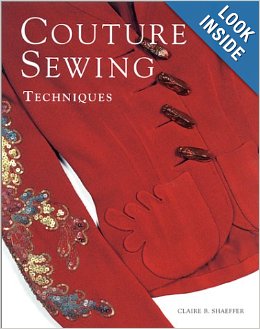
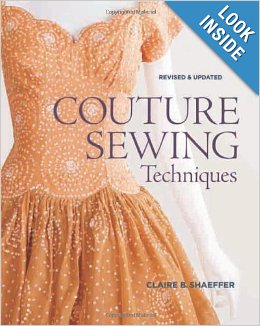
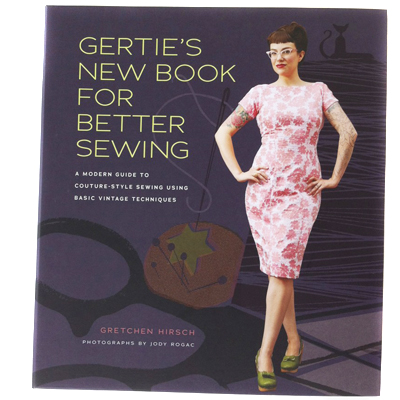
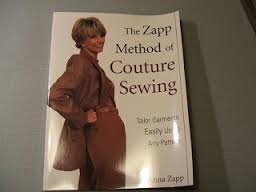
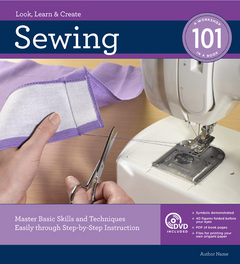
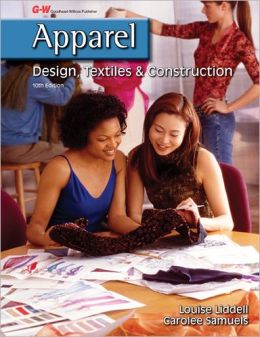
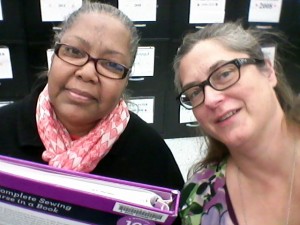
Comments
5 responses to “New Needles (in the Stacks): Sewing for Fun and Profit”
I’ve posted an extensive list of ‘how to’ books and encountered a problem when trying to pick a single one on sewing. I asked my girlfriend at the time, and she recommended the “sewing book” by Alison Smith. It seems as though, going through most of the books, regardless of their topic, older editions tend to fare better.
Will definitely use this list whenever someone asks me about learning to sew.
I feel i have not learn’t as much from books as I have from video. If ever I need to know anything, I go to a certain website that shows how to learn almost anything in regards to sewing. I think it’s much easier to watch and understand that it is to read and try to understand. A video can tell a thousand words in just a few seconds of trying to explain the same thing in a book.
I have the book Sewing 101. It is clear and concise, fairly easy to use…but the photos are so ugly! The fabrics are also really terrible. A floral ringer T? Seriously? But still…very good for learning the basics.
Yeah, I have to agree. But a lot of these books provide sample projects that are so hideous, I wonder who they think their real readers/users are.
[…] book is as good or better than our Reader’s Digest favorite. We recommend it […]